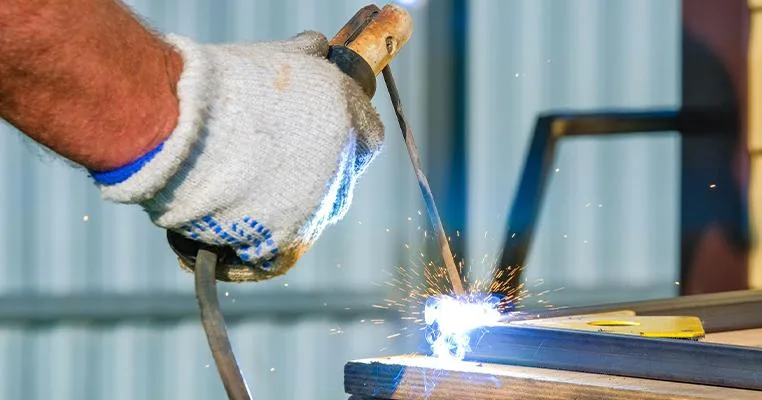Copper welding rods are used for welding mild steel and wrought iron, as well as for brazing copper and brass. They are available in various diameters and are recommended for use with oxygen or acetylene for gas welding. Copper Welding Rod phosphorous rods are not suitable for brazing steel due to the high levels of embrittlement caused by the phosphorous content.
Copper-coated mild steel welding rods are specifically designed for oxy-acetylene fusion welding of mild steel and are available in different diameters. Copper alloys such as MasterWeld ErCu (C7) are used for TIG welding of copper for maximum thermal and electrical conductivity. Silicon copper TIG brazing rods, such as SIF No. 968, are used for fusion welding materials of similar composition, copper alloys, and for TIG brazing steels.
What are the safety precautions to take when welding copper?
When welding copper, it is crucial to prioritize safety due to the potential hazards associated with the process. Here are some safety precautions to take when welding copper:
Personal Protective Equipment (PPE): Wear appropriate PPE, including flame-resistant clothing, welding gloves, protective eyewear, and welding helmets. This equipment minimizes exposure to various hazards, but it is considered the least effective means of controlling hazards.
Ventilation: Ensure proper ventilation to prevent exposure to harmful fumes and gases. Ventilation can direct the plume away from the breathing zone, reducing the risk of inhaling toxic substances.
Preheating: Preheating copper to around 500°F (260°C) before welding can significantly improve the process by mitigating its high thermal conductivity.
Higher Welding Amperage: Use a higher welding amperage to combat copper’s high melting point. Verify that the additional output can be handled by your welding apparatus.
Control Heat Input: Overheating can lead to warping and weak joints. Control your heat input carefully and allow time for the material to cool between welds.
TIG Welding: TIG (tungsten inert gas) or gas tungsten arc welding (GTAW) tends to work better with copper because it offers better control over heat input and produces cleaner welds.
What is the difference between copper welding rods and copper brazing rods?
Copper welding rods and copper brazing rods are two different types of materials used for different metal joining processes. Copper welding rods are used for welding mild steel and wrought iron, as well as for brazing copper and brass.
They are available in various diameters and are recommended for use with oxygen or acetylene for gas welding.
Copper brazing rods, on the other hand, are used for brazing copper and alloys, joining dissimilar metals, and for surfacing steel and dissimilar metal applications.
They are available in different diameters and are used at temperatures above 840°F (450°C).
Copper welding rods are used at higher temperatures than copper brazing rods, and they melt the base metals to fuse them together, while copper brazing rods create a metallurgical bond between the filler metal and the surfaces of the two metals being joined through capillary action.
Copper brazing rods are also easier to automate and offer advantages in joining dissimilar base metals and non-metals.
Effect of Welding Rod Material on Welding Operations
The way that welding rods are made has a big impact on how a welding procedure turns out. We’ll talk about how welding results are affected by the material composition of welding rods here:
1. Strength and Mechanical Properties
The welding rod’s composition directly affects the weld joint’s strength and mechanical characteristics. The tensile strength, ductility, and hardness of different rod materials varies. As an illustration:
Rods made of mild steel are renowned for having a balanced strength and ductility. They work well in general welding situations where flexibility and strength are needed.
Stainless Steel Rods: Stainless steel rods have superior mechanical and corrosion-resistant qualities. They are frequently employed in situations where rust and environmental resistance are essential.
Aluminum Rods: Aluminum has a high tensile strength and is lightweight. They are often utilized in sectors like aerospace where weight reduction is crucial.
2. Corrosion Resistance
In many applications, especially in the marine, chemical processing, and food production industries, the weld joint’s resistance to corrosion is a crucial consideration. The welding rod’s composition has a big impact on the weld’s corrosion resistance, particularly when it comes to stainless steel rods. The corrosion resistance of stainless steel rods is improved by higher concentrations of chromium and nickel.
3. Heat Resistance
The heat resistance of the welding rod becomes essential in situations where the welded components are subjected to high temperatures, like boiler fabrication or exhaust systems. In these kinds of situations, nickel-based welding rods—which have a high degree of heat resistance—are frequently chosen.
4. Weldability
Important factors to take into account are the quality of the final weld and how simple it is to use a welding rod. The composition of the rod and its compatibility with the base metal have an impact on its weldability. Certain welding rods are ideal for novices and automated welding processes since they are made with easy ignition and stable arcs in mind.
Selecting the Right Welding Rod
For every welding project, selecting the appropriate welding rod is essential. In order to choose wisely, take into account the following aspects:
1. Material Compatibility
Make sure the welding rod and the base metal you are using are compatible. Examine the manufacturer’s recommended applications and specifications for the rod.
2. Welding Process
Specific types of welding rods may be required for different welding processes such as Shielded Metal Arc Welding, Gas Metal Arc Welding, and Gas Tungsten Arc Welding. It is important to select a welding rod that is suitable for the chosen welding method.
Conclusion
Welding rods are essential tools in the welding process, and It is crucial to have a thorough understanding of the composition of different welding rods to achieve successful and strong welds in various applications. Each type of welding rod possesses unique properties that make it suitable for specific materials and welding processes. As a welder, having knowledge about these compositions enables you to make informed decisions when selecting the appropriate welding rod for your project. You can learn about the materials used in welding rods and their uses, which will provide you with the understanding needed to weld metal together and form strong connections. Therefore, embrace the world of welding rods, step into the forge, and elevate your welding skills to new heights.
Read more ( click here )



